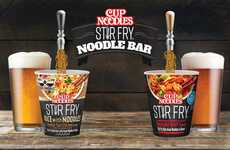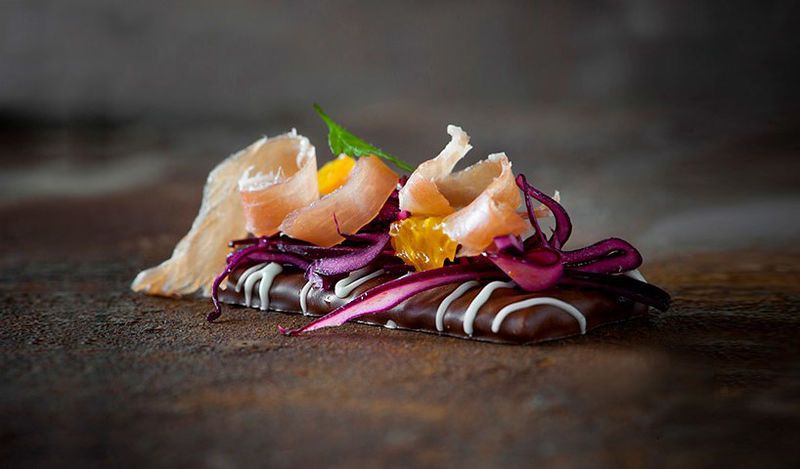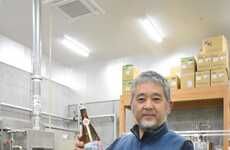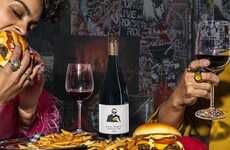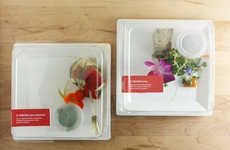
Bernard Lahousse Gets Creative with the Science of Pairing Food
Michael Baxter — May 24, 2014 — Tech
References: foodpairing & designboom
For the most part, food pairings don't get much attention because of tradition. Meat often goes with rice or pastas, or maybe potatoes if you're so inclined. It turns out that there's a science to what foods go together and the results are very different then what many would typically think.
The main aspect when it comes to Lahousse's food pairings are the interaction between the senses. Things that share common foundations, like strawberries, asparagus and coffee (vanilla being the common denominator) work well together because of how they work with the sense of smell.
While the combinations can seem outrageous, there's a method to the madness. Through years of study and creation of algorithms, Lahousse has found a way to fuse the strangest of strange foods.
Photo Credits: designboom, foodpairing
The main aspect when it comes to Lahousse's food pairings are the interaction between the senses. Things that share common foundations, like strawberries, asparagus and coffee (vanilla being the common denominator) work well together because of how they work with the sense of smell.
While the combinations can seem outrageous, there's a method to the madness. Through years of study and creation of algorithms, Lahousse has found a way to fuse the strangest of strange foods.
Photo Credits: designboom, foodpairing
Trend Themes
1. Scientific Food Pairings - Using scientific methods and algorithms to determine the best food combinations based on shared foundations.
2. Sense-based Food Pairings - Exploring the interaction between the senses, particularly smell, to create unexpected but complementary flavor combinations.
3. Creative Food Fusion - Bringing together unconventional and seemingly contradictory ingredients to create unique and innovative dishes.
Industry Implications
1. Food and Beverage - Opportunities for restaurants, chefs, and food companies to experiment with novel flavor pairings based on scientific research.
2. Culinary Arts Education - Potential for culinary schools and programs to incorporate scientific food pairings into their curriculum, enhancing students' understanding of flavor combinations.
3. Food Tech and Innovation - Creating new applications, technologies, and products that leverage scientific food pairings to offer consumers unique culinary experiences.
3.6
Score
Popularity
Activity
Freshness




